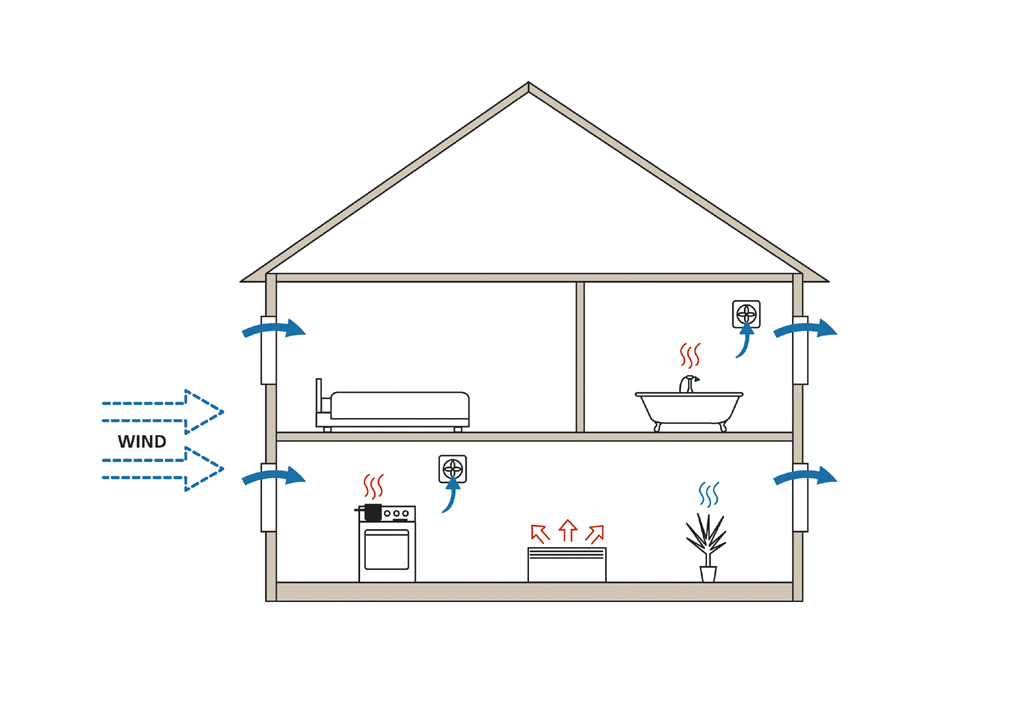Used in conjunction with the other methods of maintaining a healthy indoor home environment, passive background ventilation is a very cost effective way to reduce or eliminate condensation, and improve indoor air quality.
How does Background Ventilation Work?
Background ventilation works on the principle of pressure equalisation. Windflow around the building creates a level of pressure which is higher than the internal pressure on the windy side and lower on the sheltered side. As a result fresh air is sucked into the building on the windy side and stale air is expelled on the sheltered side. To fully utilise the above, vents are required in all four sides of the building.
What Causes Condensation?
Condensation occurs when water vapour in the inside air comes into contact with a cold surface such as window glass. If the condensation is excessive, it may form pools on your window sills.
Excessive moisture also contributes to mould and mildew appearing on curtains and walls, particularly in areas such as corners where air circulation is minimal.

Controlling Condensation
To control this condensation, you need to apply a combination of heat and ventilation – just as you do when your car window mists up.
To take maximum advantage of passive background ventilation in controlling condensation, you should adhere to the following:
- Reduce the amount of moisture generated within the home.
- Close bathroom and laundry doors and open windows or ventilators when showering or washing clothes respectively.
- Vent clothes drier to outside wall.
- Vent steam from cooking to outside (Note – vents which draw steam down to below the floor leaving the water vapour within the building envelope, do not achieve the objective of removing moisture to outside the building).
- Leave wet clothes in outside porch until dry.
- Increase internal temperature during the winter months. With good ventilation, above 16C will usually be sufficient, although a minimum of 18-20C is recommended. Heating must be continuous to ensure internal surfaces remain warm.
- Ventilate to remove moisture laden air to the outside and replace with drier fresh air. In order to conserve heat, ventilation openings can be adjusted to minimise over-ventilating on windy days (the target rate is 0.5 air changes per hour).
- Insulate exterior walls, floors and ceilings. To insulate exterior walls in an existing house may not be practical. However, insulation of the floor and ceiling is practical and will assist in reducing heat loss.
Effective control of condensation is a combination of many variables ranging from house design and location to the habits of the occupants. However, some of the variables are under your control. Glass window panes are a good indicator. To demist a car windscreen you apply heat and ventilation. Similarly with your home, when the windows mist up, increase heat and ventilation. Trial and error will determine the best combination in your particular environment.
Further reading
Check out our links to additional reading on the topic of ventilation.



